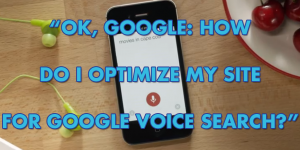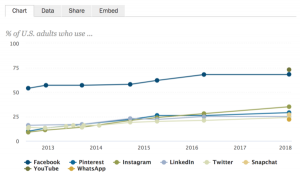
By Tony Zambito, Published November 4, 201
Many of us have heard of the term tunnel vision. It is usually described or defined as follows:
The tendency to focus exclusively on a single or limited goal or point of view.
We have seen extreme points of views in every walk of life. From politics to religion and everything in between we have seen a singular focus on a goal or point of view. Unfortunately, tunnel vision can cause intended as well as unintended consequences.
In the world of business marketing, organizations can exert all their resources towards focusing in on a single view of buyers. Doing so in a way, which blinds them to the multiple stories, buyers are experiencing. Leading them also to tell only a single story about themselves with a limited point of view.
Unintended Consequences
This type of tunnel vision or single view of buyers can result in the unintended consequence of organizations widening the gap between themselves and their buyers. Missing out on the multiple stories involving relationships, resources, goals, influences, and situations impacting buyers on many fronts. What can happen over time are misperceptions about customers and buyers can set in within organizations. Whereby, these misperceptions become taken for granted – as facts.
In my work conducting B2B executive interviews over the past few years, I have noticed executives can become storytellers about customers. However, the stories being told can be a single story about customers or buyers. These single stories can oftentimes be fraught with assumptions and inherent misperceptions turned into accepted beliefs on the part of an entire organization.
The Danger Of A Single Story
A single story or view about customers and buyers can become rooted firmly within organizations if they perpetuate over years and even decades. These firm roots taking years sometimes to undo, even when given evidence to the contrary. A person who articulates this point very well is novelist Chimamanda Nogozi Adichie, who offers this important perspective: if we only hear or believe a single story about a person or country, this can lead to critical misunderstanding.
I welcome you to take a pause and listen to this gifted novelist and storyteller expound upon this very point in the most entertaining manner:
One of my favorite lines from Chimamanda Adichie’s talk is: “but stories can also be used to empower and humanize”. A powerful call indeed for business marketing and sales leaders today is the notion of understanding stories can ultimately empower internal teams as well as customers and buyers. Rather than relating in objectified approaches common in marketing and sales, we can use stories to humanize how we relate and understand.
Evolving Beyond A Single View Of Buyers
The good news is we are beginning to see a renaissance of the idea stories can be used in business marketing. If you look up the word story in a thesaurus, you will also find a listing of every “new” approach around buyer storytelling these days. You will find terms beginning with the word buyer such as buyer narratives, storytelling, story lines, myths, legends, chronicles, biographies, folklore, and on and on. These are not new. My advice is to keep it simple and not to lose sight of an important element. Whatever you may call your buyer storytelling efforts, if you only have a limited single view of your buyers, you may be telling a story with little meaning. Worse yet, you may cause unintended consequences.
What can business marketing and sales leaders do to ensure they are not working from stereotypes or a single view of buyers? Here are a few helpful suggestions:
- Develop a story listening and story gathering mindset. Within many organizations and in the daily lives of buyers, there is rarely a single story. Work from the premise of story listening before storytelling.
- Be intentional about discovering stories and different points of view. You cannot gather stories or develop different views about buyers through guessing. It takes qualitative buyer insights research.
- Male use of buyer scenarios for discovery. One of the essential components of buyer persona development since its’ origins has been the use of buyer scenarios. An effective means for not only uncovering the many different stories buyers find themselves in, but also helps to inform how to develop your own narratives (around ideal as well as multiple buying scenarios), which resonates with buyers.
- Lead by authenticity, not by telling. In corporate cultures, a single view or story of buyers can take on mythological proportions over time. Whereby leaders can perpetuate myths by building strategies and tactics aimed at only a single view. Often, putting them in a position of telling the organization what it will do to grow by targeting a single story. Instead, lead by helping the organization to discover the many authentic stories of buyers.
Multiple Views Lead to More Opportunities
When organizations take time to truly understand the multiple stories and views of buyers, it is making an investment in not only uncovering more opportunities, but also truly being helpful to buyers. The daily operations of companies or the daily work and personal lives of buyers are rarely stereotypical. To approach companies and buyers through a single view can result, as aptly presented by Adichie, in critical misunderstanding of buyers and the goals they are attempting to accomplish.
Such critical misunderstanding can lead to not only lost opportunities, but also set in irreversible decline. Therein lies the danger of a single view of buyers.
Business Articles | Business 2 Community
(374)








